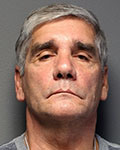The stenographer whose Grand Jury work has been called into question in a few criminal cases in Genesee County testified in open court today in a hearing on motions brought by the attorney for Antwan Odom.
Odom is charged with attempted assault, 1st, and criminal possession of a weapon in a case stemming from an altercation with a high school teammate a year ago yesterday.
Susan Ryckman, who is contracted with the county for Grand Jury transcription through Forbes Court Reporting Service, testified today about the equipment used to make transcriptions of proceedings and how that was tied into an automatic audio recording feature on her transcription device.
In 22 years of transcribing grand jury proceedings neither her employer nor any staff member with the District Attorney's Office ever informed her it was against state law to make an audio recording of a grand jury proceeding, Ryckman testified.
While Ryckman said she started handling grand jury work for the county in 1997, she wasn't asked nor did she say in what year she started using a transcription machine that enabled audio recordings of proceedings.
While motions have been made in other criminal cases, and there has been at least one prior hearing on the topic, and in each case, Judge Charles Zambito denied defense motions related to the audio recordings. Odom's attorney, Frank Housh of Buffalo, elected to require another hearing on the issue.
Housh is seeking disclosure of the grand jury minutes -- typically kept confidential and not disclosed to the defense attorney until the start of a trial -- to see if the audio recording resulted in anything prejudicial against his client. An example might be the stenographer asking somebody to speak up so the audio recorder would pick up the sound of the reporter not asking an inaudible word to be repeated.
If Housh could prove to Zambito that the grand jury proceedings were improperly influenced by the audio recording, then Housh would have a basis for dismissal of the charges against his client.
Zambito indicated he is skeptical that the actual substance of the grand jury testimony was changed because of the audio recording.
On another front, Housh is asking the case against Odom be dismissed because of "prosecutorial misconduct," which he said stemmed from the failure of the DA's office to ensure Ryckman knew she couldn't audio record grand jury proceedings.
District Attorney Lawrence Friedman called the accusation "ridiculous."
As for the audio recording material affecting the case, Housh noted that based on Zambito's prior ruling, the burden of proof falls on the defense, which he said he found unusual but that he was in a no-win situation if he couldn't review the transcript to prove there was an issue material to the case.
Zambito said he first had to be convinced that it would be possible there would be something in the transcript revealing the audio recording impacted the integrity of the grand jury proceeding.
Ryckman testified that with her present transcription setup she can record audio in one of two ways -- directly into her transcription machine or onto her laptop computer when it is connected to the machine. She said she doesn't always use her laptop during grand jury proceedings.
The recording is only activated when she touches a key on her transcription machine keypad. When she's not typing, if she pauses for any reason, there is no recording.
The quality of the audio is not good, she said, and doesn't necessarily pick up everything that is said. It can be affected by the position of the speaker, other room noise, or even a piece of paper left sitting on the internal mic of the laptop.
She said she doesn't rely on the audio recording for making the official transcript. She has used it to spot check her notes if she thinks something is unclear but she never listens to the audio recording from beginning to end. Her software allows her to highlight a questionable word or phrase and it will open that section of audio recording for her to check if the recording can help her clarify what was said.
The audio recordings only came up as an issue because Assistant District Attorney Shirley Gorman called Ryckman about a case citation contained in a completed transcript. Ryckman said she checked her notes and her transcript and then mentioned to Gorman that she also checked her audio recording. That was a red flag for Gorman.
And that was the first time Ryckman -- who is also a court reporter in a variety of other kinds of court cases, not just grand juries, throughout Western New York -- learned that she couldn't audio record grand jury proceedings.
Ryckman said she did not retain the recording from the Odom proceeding. She had deleted the recording by the time of Gorman's call per her standard procedure. She said once a transcript is done, she backs up the transcript and her notes to an external hard drive. The software she uses asks her if she would like to save the audio recording as well and she always checks "no" in the box. She then deletes the original files from her laptop.
She said she doesn't save the audio recordings because they are no longer needed once the official transcript is done and they take up too much storage space.
She did have audio recordings for Nov. 7 and Jan. 15 (Odom's hearing was in early December) when Gorman called. She had the Jan. 15 recordings because she hadn't finished the official transcript yet for that proceeding. She had no explanation for why she still had Nov. 7 recordings on her computer at the time of Gorman's call.
"I don't know how I missed the backup for Nov. 7," Ryckman told Housh during cross-examination. "I don't know why for some reason it was still on my computer."
Under questioning from Zambito, Ryckman said there is nothing in the final transcript that would indicate an audio recording had been made during the proceedings.
Earlier she testified that she didn't always use the audio recording feature and that she couldn't remember if she used it specifically during the Odom proceeding, and if she did, if she referred to it at all while preparing the final transcript. And if she did make a recording, she couldn't recall specifically deleting it, but if she did make it she deleted it according to standard procedure.
Zambito said he will make a decision on Housh's motions within a couple of weeks.
Friedman noted that Housh has said he is going to file a motion to make raise the character and background of Ray Leach at trial and that no such motion has been filed. In the interest of judicial expediency, Friedman asked that a deadline be set for the motion.
Housh countered that if judicial expediency was at issue, he should be given access to the grand jury transcript prior to the trial. He argued that if standard procedure is followed and he doesn't receive a copy until the first witness takes the stand, then the trial will need to take a recess while he reads the transcript and reviews it with his client.
Zambito ordered Friedman to turn the transcript over to Housh 30 days before the Sept. 30 trial date.
So, one way or another, Housh will soon get the transcript -- either 30 days before the trial, or sooner, if Zambito rules to his favor on his motion regarding the stenographer issue.






